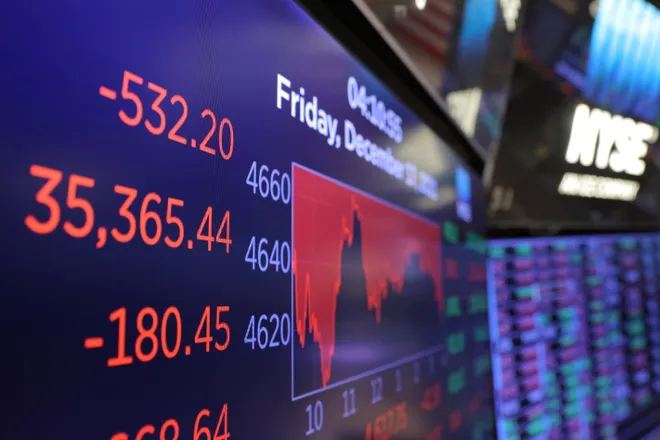The Dow Jones Industrial Average hit a new milestone Friday, closing above 40,000 for the first time and underscoring the stock market’s resilience despite volatile inflation and uncertainty surrounding the prospect of Federal Reserve interest rate cuts.
“The significance is psychological,” says Jason Ware, chief investment officer of Albion Financial Group. For investors, “it makes us feel like we’re” doing the right thing.
And for those not in the market, it’s a clarion call. “Make sure you’re invested in the market so you’re benefitting from the compounding effects over time,” he says. “You better be in the room.”
The Dow closed up 134 points, or 0.34%, to end the day at 40,003.59. The S&P 500 gained 0.12% while the Nasdaq Composite slipped 0.074%.
How is the Dow doing today?
The Dow’s latest spike was prompted by Wednesday’s inflation report, which showed inflation cooling for the first time in months. Investors have taken that report as affirmation that the Fed could move forward with interest rate cuts as soon as September.
Data showing softening retail sales and a stronger-than-expected first-quarter earnings reporting period have also bolstered investors’ confidence, according to Sam Stovall, chief investment strategist at investment research and analytics firm CFRA Research.
Why is the Dow up?
The Dow has gained more than 6% this year. Stocks had taken a tumble in April as investors grew concerned about the Fed pushing back interest rate cuts to deal with inflation’s stickiness. The index began to recover this month as new reports indicated job growth slowing more than expected, cooling inflation, and Fed Chair Jerome Powell reiterating that more interest rate hikes are unlikely.
“Investors are anticipators. And they are enthusiastically anticipating a cut in interest rates,” Stovall said. “They are also calmed by the likelihood we will be avoiding a recession.”
What does Dow at 40,000 mean for my 401(k)?
While the 40,000 milestone is attention-grabbing, the number itself means little to investors.
“40,000 is a great milestone, but end of the day there isn’t much difference between 39,999 and 40k,” Ryan Detrick, chief market strategist at Carson Group, said in a statement emailed Thursday. “Still, this is a great reminder of how far we’ve come.
Last year, he says, investors kept hearing a recession was coming and stocks would do poorly. “This is another reminder that the investors who stick to their long-term plans and ignore the scary headlines will be rewarded.”
But the arbitrary number means little for investors’ retirement funds. With only 30 blue-chip stocks, the index isn’t the best measure for 401(k) strength.
A better measure is the S&P 500, since 401(k) accounts are more likely to include an S&P 500 index fund than one tied to the Dow. The stock market index tracks the performance of 500 of the largest public companies in the country.
The S&P 500 has been hitting its own milestones this year. The index ended the day above 5,300 for the first time Wednesday and closed at 5,303 Friday.
What are the potential drawbacks to Dow 40,000?
The downside to Dow 40,000 is that it could spook some investors into thinking the market is pricey and may be poised for a pullback.
“If you’re on the bearish side, you may think this is too high,” Ware says.
The average price of stocks in the blue-chip index is 20 times projected earnings over the next 12 months, Ware says. That’s above the five-year average price-to-earnings multiple of 19.2 and the 10-year multiple of 18, Ware says. So it’s a bit expensive but not by much, he says.
And there are valid reasons for the hefty value, Ware says. The economy is still strong, corporate earnings have been solid and the Fed is expected to cut interest rates this year. Values are typically higher when the Fed shaves rates because it coaxes investors to move money into stocks from lower-yielding bonds and other fixed-income assets.
Generally, it’s taken less and less time for the Dow to reach its historic milestones as the blue-chip index has risen because a jump of 10,000 becomes less in percentage terms.
It took 26 years or so for the Dow to climb from 1,000 to 10,000 and 17.8 years to go from 10,000 to 20,000 ‒ a period of slow growth that followed the dot-com bust in the early 2000s and the Great Recession of 2007-09.
It then took nearly four years for the Dow to clamber from 20,000 to 30,000 and about three years to get to 40,000 following the strong recovery from the pandemic.

